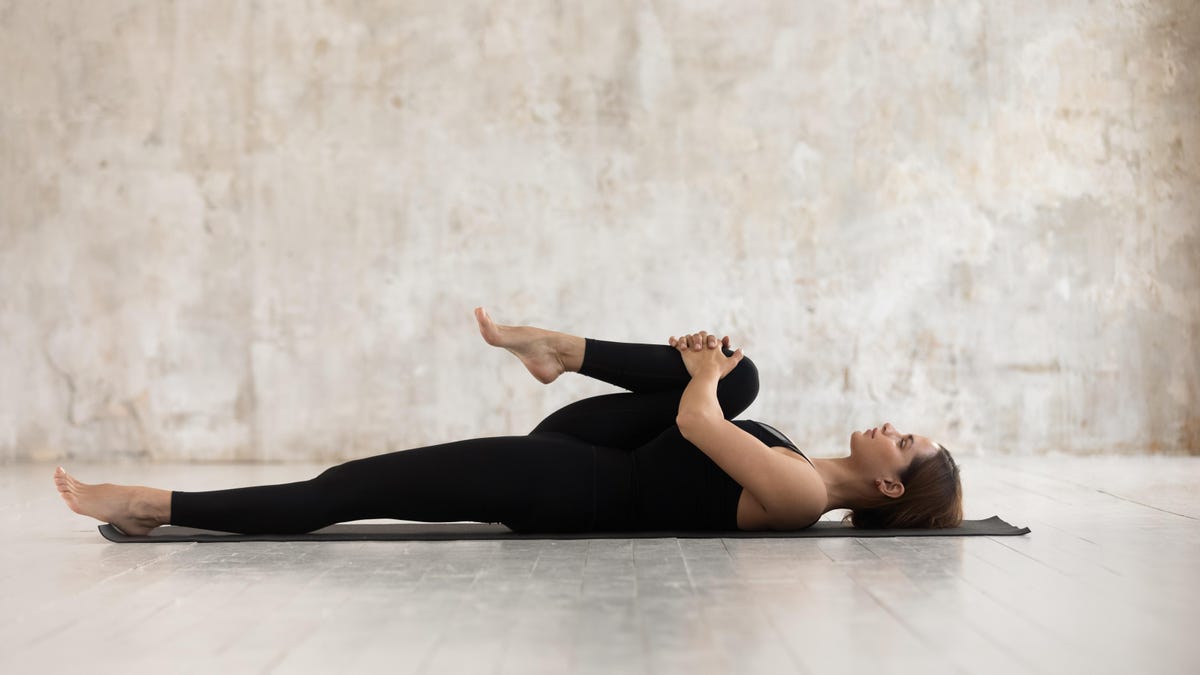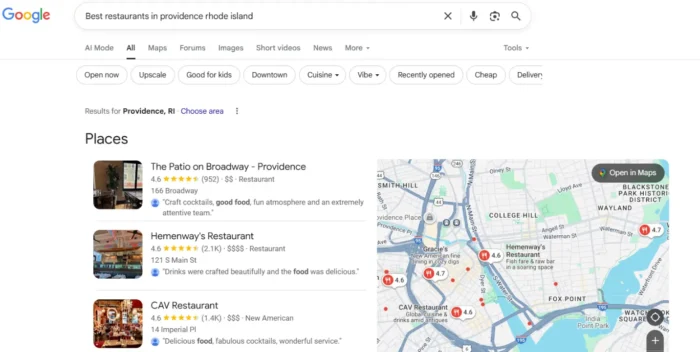These Advanced Stretching Techniques Can Actually Make You More Flexible
If you’ve been following my stretching journey, this is the part where it starts to get interesting. After establishing a routine, I’ve been starting to think about whether I’m stretching in the most effective way or not. Recently, I...


Photo: fizkes (Shutterstock)
If you’ve been following my stretching journey, this is the part where it starts to get interesting. After establishing a routine, I’ve been starting to think about whether I’m stretching in the most effective way or not. Recently, I tried some new techniques.
As I go along, I’m trying to think about stretching in the same way I would think about strength training or any other aspect of fitness that I understand pretty well. If somebody wants the most “optimal” strength training routine, I would tell them to just chill for now, get into a habit, and to just be consistent. It’s not a good idea to get too excited about any one method or guru that claims to have all the answers; chances are they don’t.
And there are a lot of gurus in the stretching world. Many of them stand to benefit from making flexibility sound complicated (because then you need their programs to guide you). That doesn’t mean their techniques are bad or wrong, but when I see this sort of thing in the strength or cardio worlds, I know the complexity is superficial. So I’ve been reading about different kinds of flexibility and mobility training and trying to suss out what’s worth listening to.
The difference between active, static, and other types of stretching
You would think there are only one or two ways of stretching. But there are, in fact, many—and the proponents of each will argue that their way is best. The definitions of each aren’t always agreed upon, which makes for yet more arguments. So I’ll give you a rundown of some of the most commonly used terms, and what to know about them.
Static stretching is when you hold a stretch for a while (say, 10 seconds or more). Dynamic stretching is when you move into and out of a stretch, or you can think of it as actively moving through a range of motion. This is done as an active stretch; for example, kicking or raising your leg as you run.Passive stretching is when you place your body part into the position where you’d like to stretch. You’re using props, gravity, immovable objects (like the floor), and/or a partner to get into the position.Loaded stretching is when you use a weight or force to pull yourself further into a stretch (for example, holding a dumbbell while bending forward as if to touch your toes)Ballistic stretching is when you bounce into a stretch, temporarily forcing your body into a more stretched position than you could achieve passively or actively.Active stretching is when you use your own muscles to get into position to stretch. You’re contracting the muscles opposite the ones you are trying to stretch.Isometric stretching is when you contract the same muscles you are trying to stretch.If you try to figure out which type of stretching is “best,” you’ll go down a deep, deep rabbit hole. I’ve spent the last few days on contortionists’ blogs and the depths of Google Scholar, and I can’t promise that I’ve figured it all out. There seem to be advantages to each type of stretching (even ballistic), and most people who train for flexibility use more than one type.
How to do PNF or “PAILs and RAILs” stretching
Again trying to stick to common sense instead of finding what’s most optimal, I cracked open the textbook I used when studying for my personal training certification. It explains an “advanced” type of stretching called PNF, for proprioceptive neuromuscular facilitation. This is one I’ve often read about, but never seen in the wild.
The technique I tried is the one that’s supposed to be the most effective but also not for beginners. (Did I let that stop me? No.) It’s called “hold-relax with agonist contraction.” And man, it fucking works. If you want to try this at home, I would advise you to read up a bit first, and to make sure the stretches and the contractions are both gentle, like no more than a 5 out of 10 intensity. They’ll still work this way, and you’ll reduce the chances that you’ll be sore the next day or, worse, pull a muscle.
PNF stretching is usually described as something that a trainer does to an athlete; but I figured, why not use the same techniques on myself? With the above warning in mind, here’s how I adapted some of my usual stretches to take advantage of PNF techniques:
I held the stretch passively for about 10 seconds (ie, normal stretching).I then did an isometric contraction of the muscle I’m trying to stretch, pushing that leg (or whatever) against my hand or an immovable object like the floor. This was also 10 seconds.Then I used the opposite muscle to pull myself deeper into the stretch, and held that for about 20 seconds.For example, in a toe-touch stretch: I reached for the floor, then I held the back of my ankles and contracted my hamstrings like I was trying to pull them away from my hands; then I reached for the floor again and this time used my abs, quads, and hip flexors to pull myself deeper into the stretch. Whaddaya know, now I could touch my entire fingers to the floor instead of my fingertips. The results were very similar to the toe-touching video we discussed in an earlier post.
I then did the same thing with a front split/kneeling lunge stretch. I am, you may recall, nowhere near being able to do a split. So I did 10 seconds of the stretch, then for 10 seconds I drove my front heel and my back knee into the ground, as if I were trying to stand back up. Then for the final step I used my leg muscles to pull myself deeper into the stretch. This one was strange: my hip flexors relaxed as expected, but my hamstrings just hurt. It was like they were saying “we’ve done enough already! Go easy on us!” So I eased up.
Last one: a standing quad/hip flexor stretch. This is the one you see runners doing where they stand on one leg and hold the other heel near their butt. I did the stretch as usual for 10 seconds, then grabbed hold of my ankle and tried to pull my foot and knee forward (contracting my quads and hip flexors). Then I contracted my butt and hamstring to bring my heel farther back and–yep–I was able to easily touch my heel to my butt, where I hadn’t been able to do that in the first stretch. I took a video of this one, which demonstrates the technique pretty clearly (note that the video is 4x speed):
It wasn’t until after I did this that my rabbit hole dives brought me to something called PAILs and RAILs (which stand for progressive angular isometric loading and regressive angular isometric loading). First you stretch passively, then you do a PAIL contraction, then you do a RAIL contraction. This tends to be a favorite technique from the kinds of folks I mentioned who seem to over-complicate their explanations, and I had been saving this to look into later. But then I saw somebody saying that PAILs and RAILs are the same thing as PNF, and my god, they’re right. Here’s a five-minute video featuring the exact same stretching technique as my video above, stretching the same muscle group, except that they hold the initial passive stretch for two minutes instead of 10 seconds, and there’s a lot of extra stuff about pads and a bench and a stick and you stretch the whole side of your core, or whatever. Does that extra stuff help? Maybe. But the basic principles seem to be the same as in my standing stretch.
Why PNF stretching works
Stretching isn’t just about how far your muscles can stretch; it’s also about how far your nervous system will let them stretch. Stretching techniques like PNF address the nervous-system factor.
The first body system we’re taking advantage of here is called autogenic inhibition. Muscles work by pulling on your bones, and the tissue that connects muscle to bone is called a tendon. Within this tendon are microscopic sensors called Golgi tendon organs. The traditional explanation is that when a muscle (say, one of the muscles that makes up your quadriceps) pulls too hard on its tendon, the GTOs tell your nervous system to ease up so you don’t pull the muscle off the bone.
The actual story is probably a bit different, since you can trigger this phenomenon even with a gentle stretch (remember, we only need a 5/10 stretch here). But that’s why PNF has you contract the muscle you’re about to stretch. This makes your body want to relax that muscle. So you immediately go back into the stretch, and boom, you’re able to relax that muscle more.
The second step takes advantage of a different mechanism, called reciprocal inhibition. Here, contracting one muscle tends to make the opposite muscle relax. For example, when you use your biceps to curl a dumbbell, your triceps have to relax and lengthen. So in this type of PNF stretching, after you use autogenic inhibition to get your quads to relax a bit, you then contract your hamstrings to get your quads to relax even more.
There is research suggesting that a PNF stretching routine can be better for long-term flexibility than just doing static stretches. The dramatic increase in range-of-motion you get from a PNF session only lasts a few minutes, but if you keep doing it consistently, over weeks and months you should be able to get further and further into the stretch.
So I now have PNF stretches in my routine. I use them for one of my shoulder stretches, a hamstring stretch, a quad stretch, and an adductor stretch. I do three rounds of the PNF contractions for each stretch, and then the rest of my stretches I do in the regular passive way. I also only do PNF stretching every other day, tops; if I want to stretch on my “rest” days, I’ll do a routine with passive stretching only.

 Lynk
Lynk 































